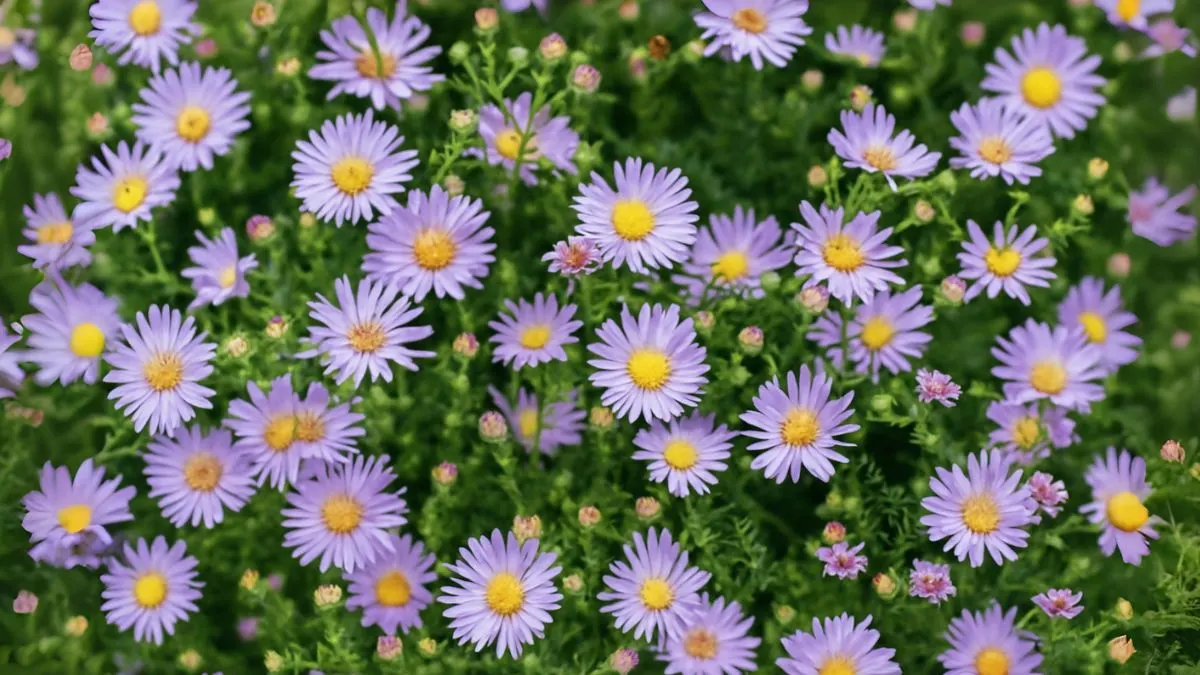When most summer flowers fade, perennial asters arrive to steal the show. Their daisy-like flowers in shades of purple, pink, blue, and white make gardens glow in late summer and fall. These plants are more than just pretty—they’re pollinator magnets, feeding bees and butterflies when few other blooms remain.
In this article, I’ll share everything you need to know about growing asters successfully, from planting tips to care routines. I’ll also sprinkle in some personal experiences, because my own asters transformed my dull autumn garden into a colorful retreat.
Why Choose Perennial Asters?

Gardeners worldwide love asters for their beauty and resilience. Most are easy to grow, requiring minimal effort once established. They are also incredibly versatile—you can plant them as you would any perennial in garden beds, borders, or even in pots.
What makes asters so unique is their timing. They begin blooming in late-August and early-September, just when gardens often start to look tired. If you’ve ever wanted a flower that extends your garden’s beauty into fall, asters are a perfect choice.
Planting Perennial Asters
Ideal Growing Conditions
To thrive, asters need the right spot. Plant in a sunny location with well-draining, loamy soil, adding compost to enrich it. Asters particularly love cool, moist summers and cool nights in sites with full to partial sun.
- Soil: Asters thrive in well-drained, fertile soils rich in organic matter.
- Light: Full sun is ideal, but partial shade works in hot climates.
- Water: Keep soil evenly moist but avoid waterlogging.
I once planted a group of asters in heavy clay soil, and they struggled. When I amended the soil with compost and sand for better drainage, the plants bounced back quickly—proof that soil really does matter!
Also Read: Turtle Vine Is Taking Over Plant Lovers’ Homes — Here’s How to Keep It Thriving
Planting in Containers
For small spaces or patios, asters can also be grown in pots. They can be planted in containers using a lightweight potting mix. Choose a pot with drainage holes and don’t forget to water regularly, as containers dry out faster than garden beds.
Seasonal Care Tips
- Watering and Feeding: Water asters deeply during dry spells. They don’t like “wet feet,” so drainage is crucial. Adding compost each spring helps maintain nutrient levels and keeps plants healthy.
- Pruning and Deadheading: Deadhead spent blooms to encourage more flowers. Cutting back plants by one-third in early summer can also make them bushier and delay blooming for an extended display.
- Dividing and Replanting: Over time, asters can become crowded. Divide clumps every three to four years in spring. This not only rejuvenates the plants but also gives you more asters to spread around your garden—or share with friends.
- Blooming Season: Late-Summer Stars: One of the joys of asters is their timing. They begin blooming in late-August and early-September, lasting until frost. Their daisy-like flowers are irresistible to pollinators. In my garden, monarch butterflies flock to asters in September, creating a magical scene that always makes me pause and appreciate the season.
Quick Care Guide for Perennial Asters
Care Aspect |
Requirement |
Notes |
Light |
Full to partial sun |
Best bloom in at least 6 hours of sun |
Soil |
Loamy, well-draining, fertile |
Add compost for richness |
Watering |
Regular, moderate |
Avoid soggy soil |
Blooming Season |
Late-August to frost |
Peak in cool nights |
Container Growth |
Lightweight potting mix |
Needs frequent watering |
Also Read: Why Most Echeverias Die Prematurely
Personal Experience with Asters
A few years ago, I added asters to my garden for the first time. I followed the advice to plant in a sunny location with well-draining, loamy soil, adding compost to enrich it. Within a season, the results were spectacular. Not only did they brighten my fall garden, but they also became the most-visited flowers by pollinators. Watching bees buzz happily around them made me realize how valuable asters are—not just for beauty, but for the ecosystem.
If you want a low-maintenance, high-reward perennial, asters are an excellent choice. From their adaptability—easy to grow and maintain these flowers—to their stunning fall display, they deserve a spot in every garden. Try planting them this season—you might just fall in love with autumn all over again.






